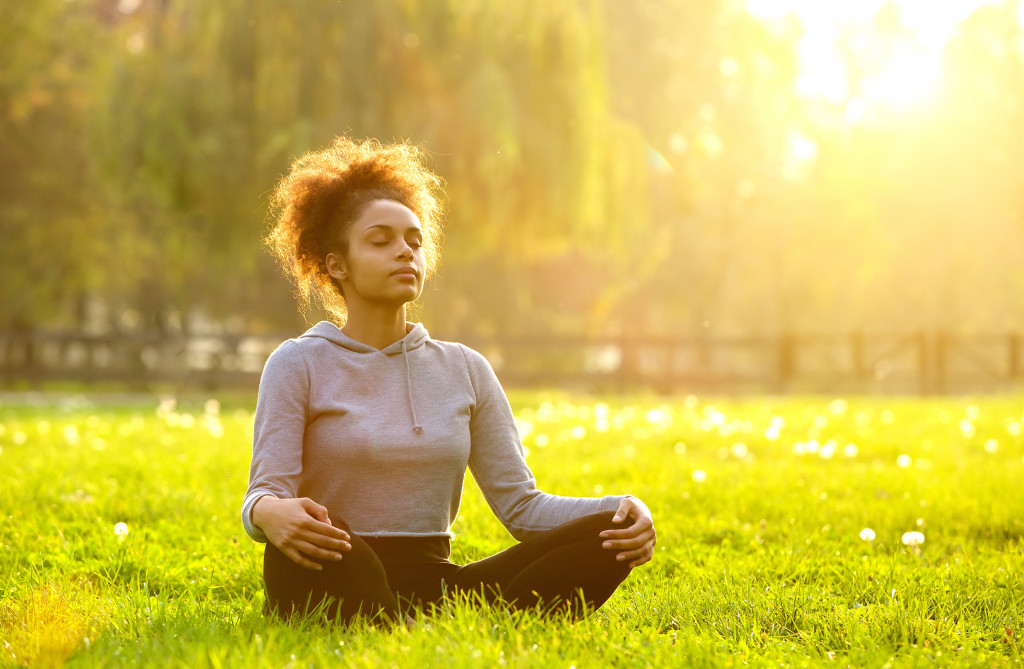Whether you are a student or an employee, one thing we can never avoid is stress. Stress can cause us to feel physical, emotional, or psychological tension. Stress is our body’s natural response to anything that requires action or attention. If not handled correctly, stress can become severe and lead to anxiety and depression.
Luckily our ancestors found a way to handle stress. Meditation is a perfect mind-body practice to promote relaxation in our mind and body. Researchers prove that meditating can help a person relieve stress because of its mental and physical health benefits. It helps reduce blood pressure, anxiety, insomnia, and depression.
It also has other benefits like reducing the number of times you get a cold or flu and even its severity. Some people think that learning meditation is too complicated or time-consuming. But all you need is a few minutes a day to practice these good exercises and feel relieved. Here we will teach you how to handle stress by meditating.
Basic Meditation Techniques
Look for a quiet place
The world is full of distractions. Therefore, this may not be a simple task. However, when learning to meditate to relieve stress, a peaceful area where you can sit without interruption is essential. You will be less likely to be distracted as your meditation skills improve.
It is easier for you to get distracted at first. Cars passing by, singing birds and loud people. Turn off all electrical devices such as cell phones and television to avoid distractions from your meditation job.
It’s ideal to close the door. It will also help to wear earplugs. You will find that as your meditation skills improve. You will be able to meditate anytime or anywhere, even in high-stress situations like traffic, work, or busy stores.
Generally, you can meditate anywhere. You can do it by the beach, under the tree, and even when you’re in city accommodations across the world.
Find a position that makes you comfortable
You must be comfortable with what you are doing. You can do meditation in many positions, such as lying down, sitting, walking, and standing. The objective is to feel at ease so that discomfort does not become a distraction.
In a classic cross-legged position, some people may feel more connected. Beginners may find this uncomfortable, so consider pushing your bottom up on a pillow, sitting in a chair, or leaning against a wall for support.
Maintain control over your breathing
Controlled breathing is essential in meditation. Deep breathing relaxes your physical and mental body. In reality, you can meditate well only by concentrating on your breathing.
Deeply inhale and exhale through your nose. As you breathe, keep your mouth closed yet relaxed. Pay attention to how your breath sounds.

Use your diaphragm so you can expand your lungs. Placing your hand on your stomach is a good idea. It will rise as you inhale, and it should fall as you exhale. At regular intervals, take a deep breath in and a deep breath out.
Concentrate on something
The idea is to clear your mind of stress-inducing distractions so that your body and mind may relax. Some people like to concentrate on a single object, image, mantra, or breath, but you can also focus on a blank screen or something else.
During meditation, you might lose your focus, and your mind will wander. Even for individuals who have been practicing meditation for a long time, this is typical and anticipated. When this happens, return your attention to the item, your breathing, or the emotion you focused on when you began your meditation.
Participate in prayer
Praying is a type of meditation that is used in a variety of non-religious and religious situations globally. Gear the prayer to the things you need, your beliefs, and contemplative objectives.
You can pray silently, aloud, or in writing. You can write your prayers in your own words so you can pour your heart out.
You can use either informal or devout prayers. Choose where you are comfortable. Do not forget to include your beliefs and the things you want to accomplish.
Understand that there’s no correct approach to meditation
You’re simply making it worse if you worry about your breathing, what you’re thinking about, or if you’re meditating rightly. You can customize meditation to fit your situation and lifestyle. It’s about finding the time to relax despite your hectic and stressful day.
Have a good time
While meditation can give you both quick and long-term advantages, it should also be a pleasurable experience. When we are used to being stressed, it’s natural to have some resistance to clearing our minds and relaxing, but don’t force yourself to meditate in a certain way if you don’t love it.
Don’t forget that relaxing activities also work well to meditate. Listen to music, read books, write a diary or journal.

